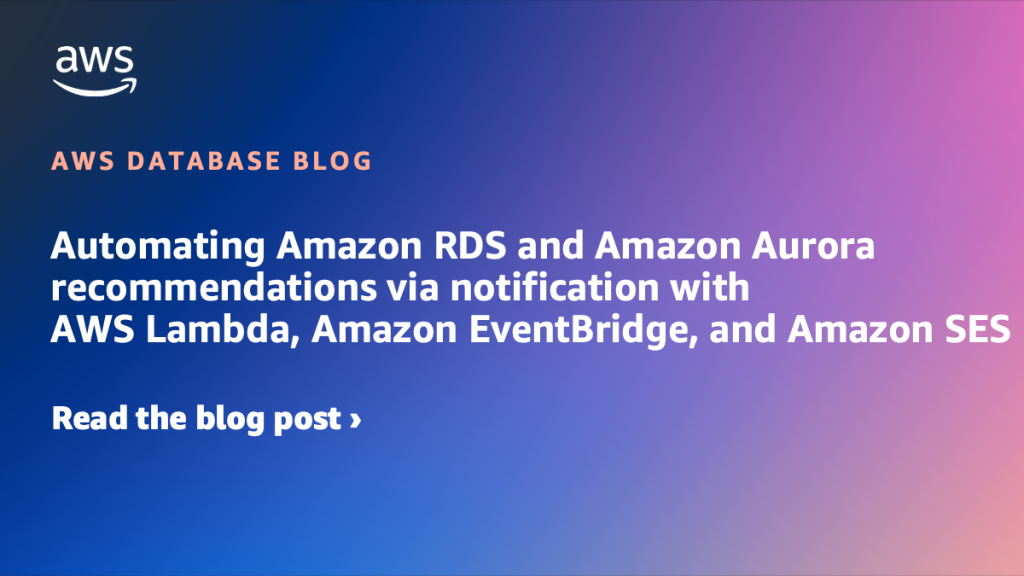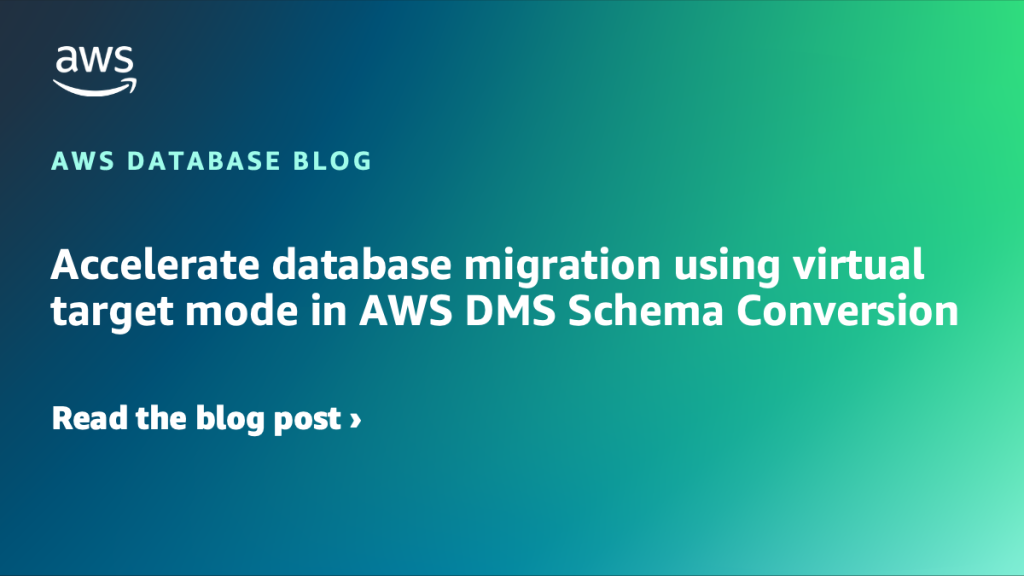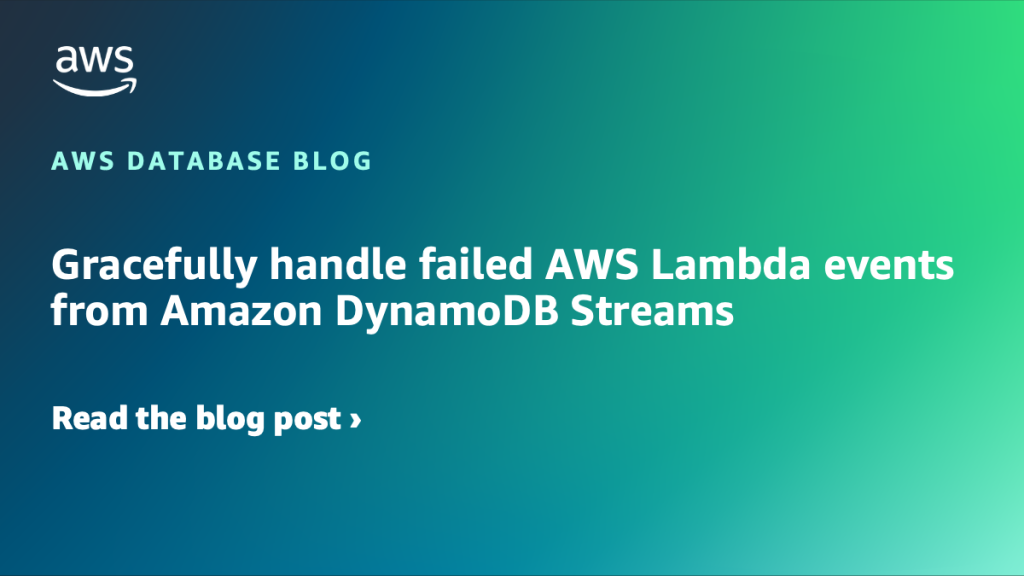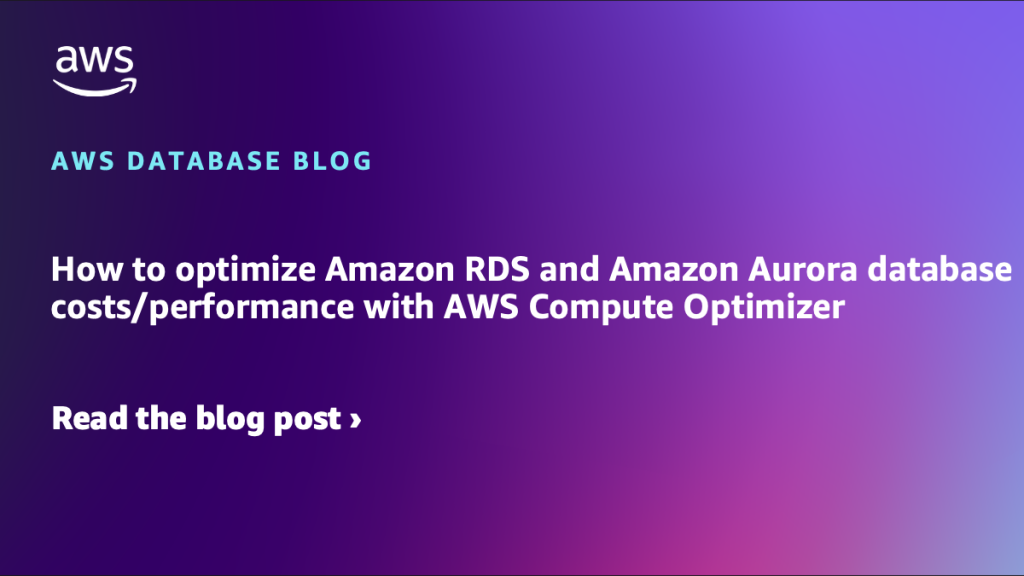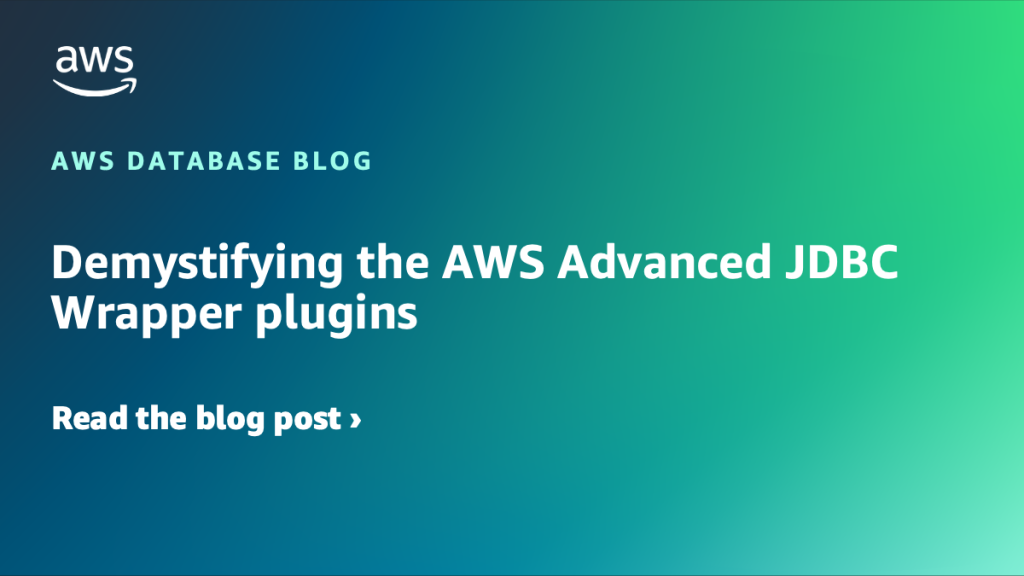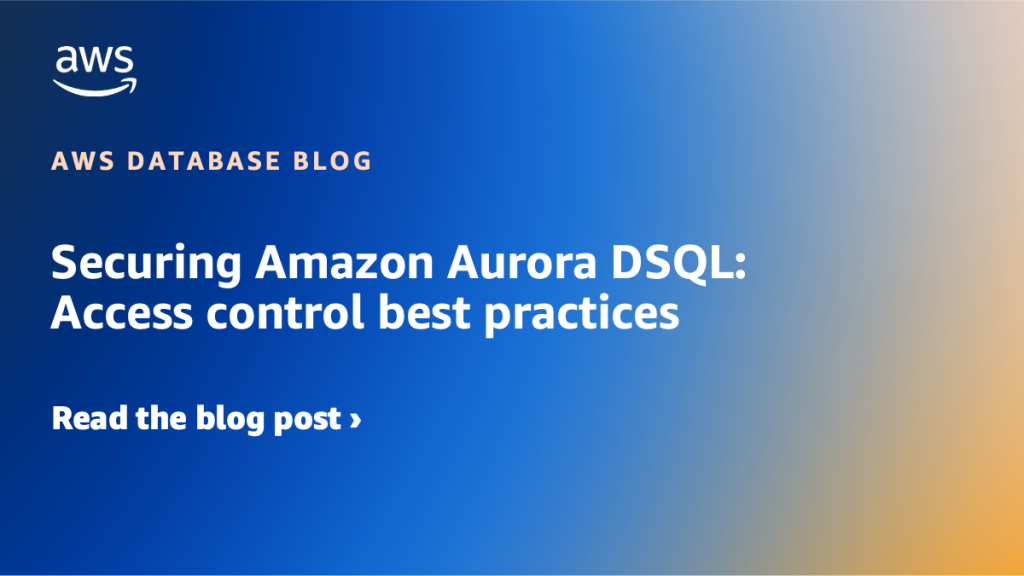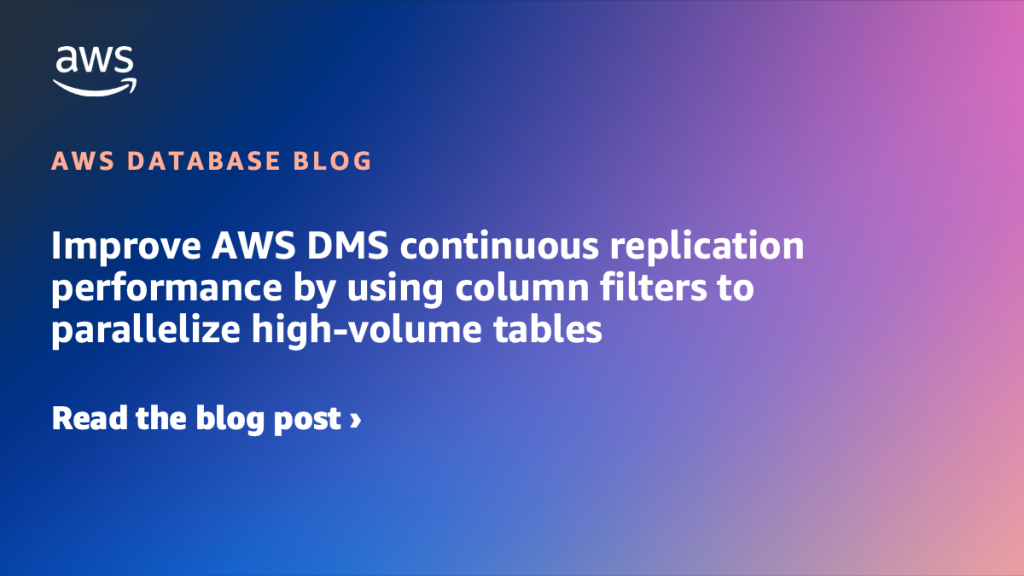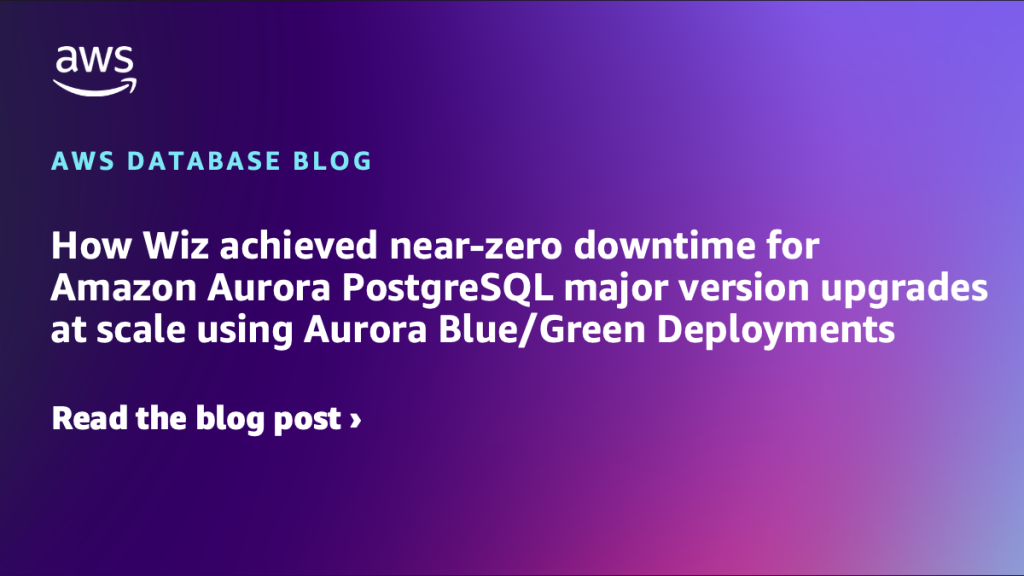AWS Database Blog
Category: Advanced (300)
Scale read operations with Amazon Timestream for InfluxDB read replicas
In this post, we show how to use Amazon Timestream for InfluxDB read replicas to scale your read operations by adding additional read replicas while maintaining a single write endpoint. Built in partnership with InfluxData, our read replica add-on offers InfluxDB open source customers the ability to horizontally scale their read capacity.
Automating Amazon RDS and Amazon Aurora recommendations via notification with AWS Lambda, Amazon EventBridge, and Amazon SES
In this post, we walk through a solution that automates the notification of Amazon RDS and Aurora recommendations through email using AWS Lambda, Amazon EventBridge and Amazon Simple Email Service (Amazon SES).
Accelerate database migration using virtual target mode in AWS DMS Schema Conversion
AWS recently announced virtual target mode in AWS Database Migration Service (AWS DMS) Schema Conversion. This feature helps you start migration planning without provisioning target databases. In this post, we show you how to get started using virtual target mode in AWS DMS Schema Conversion.
Gracefully handle failed AWS Lambda events from Amazon DynamoDB Streams
In this post, we show how to capture and retain failed stream events for later analysis or replay using Amazon S3 as a durable destination. We compare this approach with the traditional Amazon SQS dead-letter queue (DLQ) pattern, and explain when and why Amazon S3 is a preferred option.
How to optimize Amazon RDS and Amazon Aurora database costs/performance with AWS Compute Optimizer
In this post, we dive deeper into database optimization for your Amazon Relational Database Service (Amazon RDS), exploring how you can use AWS Compute Optimizer recommendations to make cost-aware resource configuration decisions for your MySQL and PostgreSQL databases.
Vibe code with AWS databases using Vercel v0
In this post, we explore how you can use Vercel’s v0 generative UI to build applications with a modern UI for AWS purpose-built databases such as Amazon Aurora, Amazon DynamoDB, Amazon Neptune, and Amazon ElastiCache.
Demystifying the AWS advanced JDBC wrapper plugins
In 2023, AWS introduced the AWS advanced JDBC wrapper, enhancing the capabilities of existing JDBC drivers with additional functionality. This wrapper enables support of AWS and Amazon Aurora functions on top of an existing PostgreSQL, MySQL, or MariaDB JDBC driver of your choice. This wrapper supports a variety of plugins, including the Aurora connection tracker plugin, the limitless connection plugin, and the read-write splitting plugin. In this post, we discuss the benefits, use cases, and implementation details for two popular AWS Advanced JDBC Wrapper Driver plugins: the Aurora Initial Connection Strategy and Failover v2 plugins.
Securing Amazon Aurora DSQL: Access control best practices
You can access an Amazon Aurora DSQL cluster by using a public endpoint and AWS PrivateLink endpoints. In this post, we demonstrate how to control access to your Aurora DSQL cluster by using public endpoints and private VPC endpoints through PrivateLink, both from inside and outside AWS.
Improve AWS DMS continuous replication performance by using column filters to parallelize high-volume tables
In this post, we explore how you can use column filters to divide a high-activity table into multiple tasks during the CDC phase. This approach can accelerate the migration process and reduce target latency.
How Wiz achieved near-zero downtime for Amazon Aurora PostgreSQL major version upgrades at scale using Aurora Blue/Green Deployments
Wiz, a leading cloud security company, identifies and removes risks across major cloud platforms. Our agent-less scanner processes tens of billions of daily cloud resource metadata entries. This demands high-performance, low-latency processing, making our Amazon Aurora PostgreSQL-Compatible Edition database, serving hundreds of microservices at scale, a critical component of our architecture. In this post, we share how we upgraded our Aurora PostgreSQL database from version 14 to 16 with near-zero downtime using Amazon Aurora Blue/Green Deployments.

